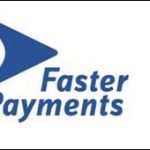It has been many years since significant changes have come to the US Dollar (USD) domestic payments space.
In fact, it has remained relatively unchanged, at least in a sweeping, strategic sense, for the last

What does the future hold for US domestic payments?
four decades, since NACHA (National Automated Clearing House Association – which manages Automated Clearing Houses (ACH) in the United States) was founded in 1974. During that time, wires, ACH, cards and cheques have run the game – writes Edmund Esch, Managing Director and Head of USD Clearing Product Management for BNY Mellon Treasury Services – in an article which first appeared in the EPC Newsletter.
But now, driven by competitive pressures in the market from both new and traditional payment methods, change is here. Additionally, the efforts from the Federal Reserve Bank, with its Faster Payments Task Force, to reevaluate and redefine the future of payments has helped to change the payments landscape. Taken together, these market shifts and technology advances have put pressure on banks to reexamine their existing systems, which are built on old technology and traditional means of doing business and, as a result, are unable to respond to new demands.
Into this gap stepped the fintechs, with innovative payment solutions utilising new technologies to make payments at costs lower than – and at speeds faster than – traditional systems. Examples of these solutions are everywhere, and some are even approaching the status of household names: PayPal, Venmo, Apple Pay, Google Wallet, and the list goes on. This, in turn, has spurred financial institutions to respond competitively.
Market pressures and opportunities
BNY Mellon, like many banks, is now working to bring the latest technological solutions for payments to our present and future client bases. We are moving in several directions, because the challenges are great enough, the opportunities large enough, and the future unpredictable enough, that organisations need to spread their bets or risk falling behind the competition.
Our efforts, like those of other players in the USD payments industry, address three major domestic initiatives: The Clearing House’s Real-Time Payments system, NACHA’s Same Day ACH effort and Early Warning’s clearXchangeSM service.
New clearing systems, new clearing methods
All three of these means of improving domestic USD payments have one thing in common: they focus on providing payments with a significant reduction in the period of time for exchanging information and funding between the originator and the beneficiary. At the same time, two of the three focus on the tokenisation of user information (the assignment of a random credential, or token, for an end user’s account number) in order to keep sensitive account information as confidential as possible.
The Clearing House – Real-Time Payments (RTP): The Clearing House, a consortium owned by 24 of the largest US commercial banks and operating many of the largest payments networks such as Clearing House Interbank Payments System (CHIPS) and the Electronic Payment Network (EPN), is partnering with its member banks to develop a ubiquitous solution, already known in the industry as RTP, to meet the need for a faster, more confidential end-to-end user experience. Their system, which is scheduled for production in 2017, aims to decrease the time of payments while increasing efficiency, availability and transparency.
It intends to do this through up-to-date, faster technology that will enable payments to be made within one minute, start-to-finish (efficiency). It will be available 24 hours a day, seven days a week (availability); and it will provide end users with an increase in the amount of information they receive (transparency). Also of note in this new system is a built-in capability for making a payment request – not a direct debit, but an optional message that can be sent by a party expecting a payment and can serve as both a reminder of payment due and as a prompt to initiate the payment command. It can, of course, also be ignored or denied.
Early Warning’s clearXchangeSM: Owned by a small partnership of banks, Early Warning has entered the market in the last few years with a payment system that addresses the need for confidentiality and anonymity when dealing with payments both for and to consumers. clearXchange leverages a vast database of consumer banking information that allows beneficiaries to register to receive payments from their counterparties while providing the counterparties with nothing more than a mobile phone number or an email address. clearXchange bifurcates the transmittal of its payments: the information associated with the payment flows along its proprietary network, while the settlement occurs through the US’s ACH network.
NACHA—Same Day ACH: NACHA has also seen the need for a faster payment option and has come up with a means of effecting payments within a given day. Through a three-phase implementation plan, Same Day ACH payments will ultimately be available throughout the US on a same-day basis. NACHA’s reach is wide, claiming to connect all 12,000 financial institutions in the US. Unlike the previous two methods of payment, Same Day ACH will be available both for credit and debit payments, thereby allowing senders to draw funds automatically (under pre-existing authorisations, of course) from counterparties’ accounts within a single day.
What’s in common and what’s different?
The goal for each of the payments systems and methods is a common one: improve the existing payment abilities in the US. However, each has singular features, both great and nuanced, that affect the user experience. The chart below tracks the differences among the various methods.

Opportunities for users
Financial institutions, corporations and individual account holders all have something to gain from these new payment schemes. Financial institutions now have competitive recourse to the alternatives offered by fintechs. In combination with their already existing networks and levels of trust, financial institutions have gained access to payment solutions that not only match, but are often of wider breadth than those the fintechs offer. And, even if a financial institution is of a size that makes direct participation impractical, it can participate in at least some of these markets indirectly. BNY Mellon sees this as an excellent —and necessary— compromise between the need for ubiquity in payments participation (and its associated result, network effect) and the fact of the high cost involved in direct participation. We intend to offer this service widely and we anticipate other banks will as well.
Corporations also have a great deal to gain from domestic real-time payments on both the receivable and disbursement side. From a receivables perspective, real-time payments will offer an immediate and irrevocable transaction, which will significantly speed up the working capital cycle and reduce the credit risk inherent in cheque payments and even ACH debits. Real-time messaging will provide convenience and greater customer satisfaction by utilising requests for payment.
On the disbursement side, many corporates will be able to provide consumer disbursements around the clock for such payments as refunds, insurance claims, disaster relief or human resource disbursements. Whether used for receivables or disbursements, the 24/7 immediate feature is something that will greatly change how corporates view and manage their liquidity today.
Finally, individual account holders will benefit. Their payments will be more secure than cash, faster than cheques, and less costly than wires. They will have access to a 24 hour a day, seven day a week solution for their payment needs, and they will no longer need to provide their full payment information to parties they may not know well (or at all): an email address or a mobile phone number will be identification enough for day-to-day payment needs.
Summary
Clearly, the USD Payments space is changing. The traditional four payment methods, cheques, ACH, wires and cards, are being supplemented by a fifth type of payment, faster payments. These faster payments will leverage technological capabilities that were not realisable forty years ago, when the payment networks were created. Same Day ACH, Real Time Payments and clearXchange are all well positioned, despite their different offerings, to meet the needs of payments in a new competitive, immediate and technological environment.
Click here to subscribe to the free quarterly EPC newsletter






